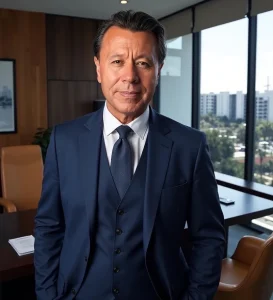
In the Nick of Time
Once upon a time in 1803 the First federal disaster legislation was enacted in Portsmouth, New Hampshire that led the US Congress to provide relief. Between the 1930s and the 1960s various federal agencies shared responsibilities handling disaster relief. Examples are the Army Corps of Engineers, Department of Agriculture and Red Cross partnerships. In 1950 US Congress enacted the Federal Disaster Relief Act. This was the first major piece of disaster relief legislation; allowed the President to declare disasters and release federal funds.
Between the 1960s and the 1970s the response responsibility was spread among more than 100 federal agencies, leading to inefficiencies and overlap.
On April 1, 1979, President James Earl “Jimmy” Carter, Jr. created by Executive Orders 12127 and 12148 the Federal Emergency Management Agency (FEMA) (the “President Carter Orders”). The President Carter Orders merged multiple federal disaster and civil defense functions. FEMA is created as a centralized authority aimed to improve coordination of emergency response and planning.
In the 1980s FEMA has a dual mission covering Natural Disaster response and Nuclear Preparedness and Civil Defense. This dual mission was revised by President Reagan who prioritized Natural Disaster readiness for US constituents over cold war scenarios.
The 1980s and the 1990s became a period of making many improvements within the FEMA Agency to be more effective in the aftermath of the Loma Prieta Earthquake in San Francisco in 1989 and Hurricane Andrew that devastated Southwest Miami, Florida City and Homestead in 1992.
Between 1993 and 2000, President Bill Clinton appointed James Lee Witt as FEMA Director. Unlike prior FEMA Directors, James Lee Witt was the first Director with actual emergency management experience. Also elevated FEMA to Cabinet-level access. During this era FEMA saw changes in disaster preparedness, mitigation, and response capacity.
In March 2003 under President George W. Bush, FEMA joins the Department of Homeland Security (DHS) after the 9/11 attacks. During his Presidency many challenges arose after 9 major storms made landfall in Florida. During this critical moment, President Bush appointed Martin “Marty” Altman, PMP as the Czar in the role of FEMA Chief Infrastructure Director. He was instructed to bring all projects to completion of all 9 storms in a period of 8 years (the “Projects”). Marty in a swift display of leadership and knowledge of the ins and outs of the Stafford Act took him 6 years to successfully close the Projects.
Between 2010s and 2020s FEMA responded to Superstorm Sandy in 2012, Hurricanes Harvey, Irma, Maria in 2017, the COVID-19 Pandemic.
Our team looks forward to continuing to implement innovative approaches to PRIME Disaster Recovery Management in alignment with President Donald J. Trump’s renewed vision for the betterment of our communities.
We, at Alternative Recovery Consulting, LLC (ARC), a Blue Ocean Strategy Concierge firm, are your One-Stop-Service PRIME Disaster Management and Emergency Management solution firm delivering Oversite, Design-Build and bring Projects to completion with Task Orders and Advance Funding through Regulated Funding Firms utilizing the FEMA Public Assistance obligated funds as the collateral.
Call us TODAY (800) 481-3607 (407) 967-1950
Email: ARCNews@alternativerecoveryconsulting.com

More About the Author:
Hernando a graduate of UCONN with a postgraduate degree from the Insurance Institute of America, is a Court qualified storm damage assessment expert witness, former General Adjuster serving the National Flood Insurance Program is a dynamic leader with extensive experience in Commercial and Residential insurance property claims having served in both sides of the fence, natural disaster response, and strategic planning. With 42 years of expertise, he has guided organizations through high-stakes scenarios, including catastrophic events, by designing and executing effective response strategies that ensure business continuity and customer support. A co-author of ARC’s Blue Ocean Strategy implementation, Hernando has a proven ability to identify innovative solutions and untapped opportunities, driving operational excellence and sustainable growth from a unique and extraordinary perspective. He is passionate about fostering resilience through immediate critical emergency response solutions, mitigating risks, and delivering proactive storm hardening strategies that help organizations navigate the complexities of natural disaster recovery and beyond.
